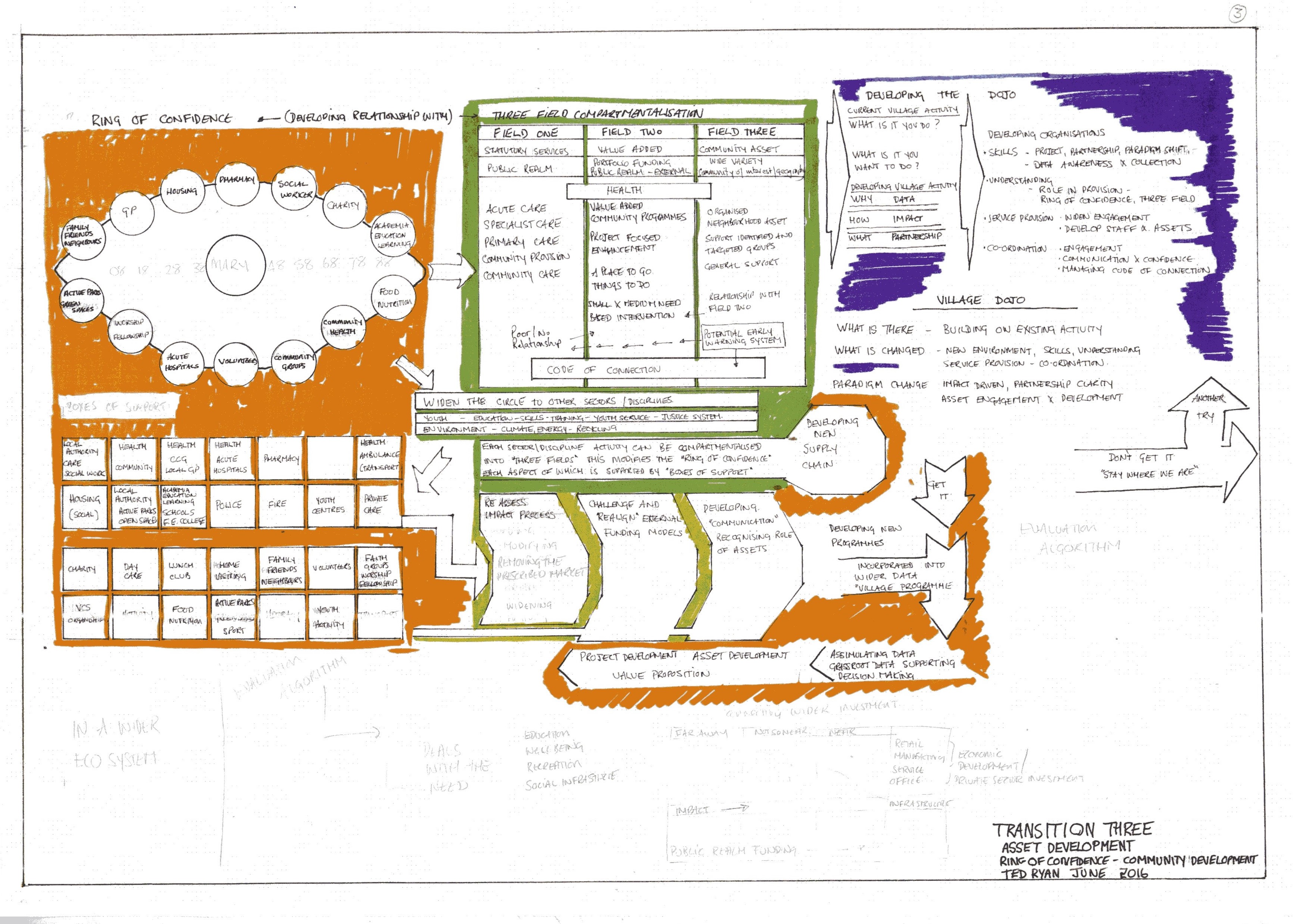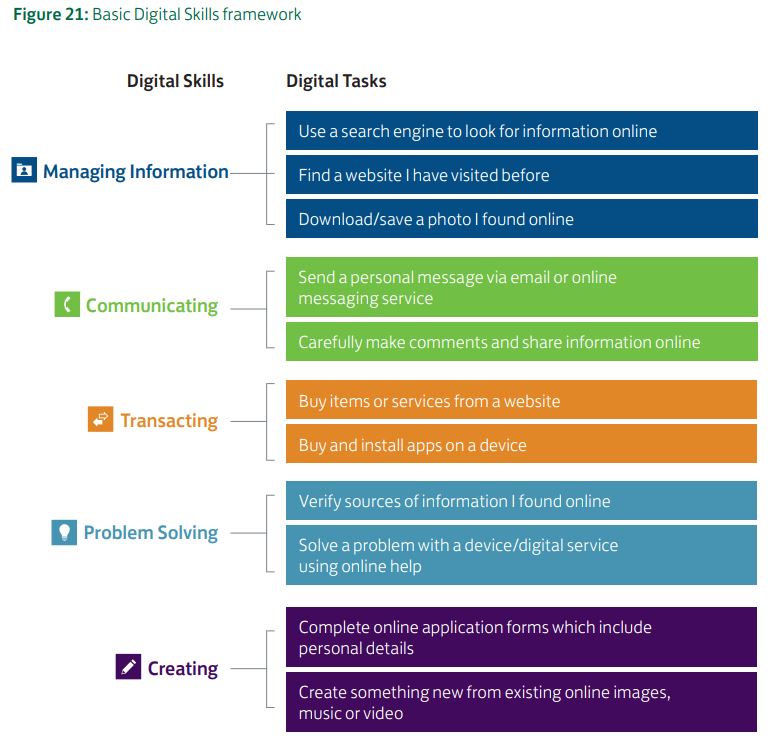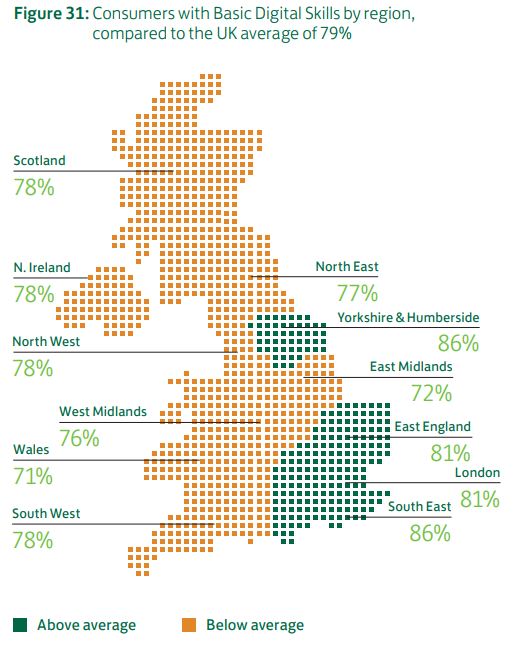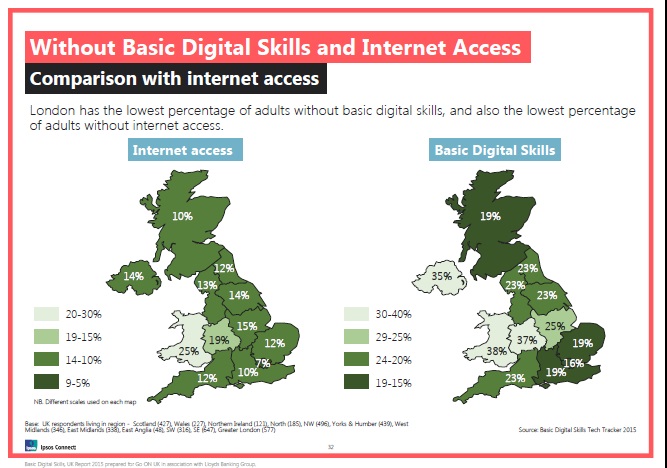Fig 1 is our first design of such a model. We will, in the coming months, develop this design and model. This will be done through discussion with commissioners and community activists to enable a robust, fundable and sustainable model to be designed that recognises the importance of all participants within the process.
Fig 1 ASSET BASED COMMUNITY HEALTH OPERATIONAL MODEL – 1ST DRAFT
The development of this process is only part of our thinking.
For this model to be implemented systemically, ensuring success and sustainability, we would argue that there is a need for true transformation of the public realm funding processes, to review its attitude and opinion of VCSE / community groups, and their role in service provision.
Figs 2-4 outline our thinking about changes to the public realm funding decision making process.
We promote the use of data from wider sources than those currently used. We outline an asset based approach that should be adopted to support services, not because utilising community assets is a cheaper option in time of public realm budget cuts, but because community assets are an essential and skilful resource than can optimise the impact of projects.
In the coming months we will expand on these designs exploring current process, Fig 2 Traditional (Established) Model (yellow section on left), and the ‘market’ development of a supply chain. This diagram also explores the Product Development Process, (brown section on right), which is supposedly assimilated into the supply chain process.
Fig 2 TRADITIONAL (ESTABLISHED) MODEL, PRODUCT DEVELOPMENT PROCESS
Fig 3 Current Ecosystem, Design Process, Wider Data Proposal explores what impact the term ‘transformation’ has had on the ecosystem, with the yellow and blue sections identifying a “delivery disconnect” in the sustainability of income from any ‘product’ developed within the supply chain.
This figure also provides an outline of the ‘Design Process’(grey section), as well as outlining a Wider Data Proposal (green section).
These last two sections form part of ‘absolute’ processes, processes that, together with the Product Development Process, are external to the system but should be incorporated within it, if true transformation is to take place.
Fig 3 CURRENT ECOSYSTEM, DESIGN PROCESS, WIDER DATA PROPOSAL
The last sheet, Fig 4, incorporates elements of our previous work, Three Field Asset Based Community Development (green section), together with structures developed by Poc Zero with whom we are working to develop transformational proposals. Poc Zero’s Ring Of Confidence, is augmented by Boxes Of Support (orange section). The final section Developing The Dojos (purple), begins the exploration of how community organisations can be engaged as ‘peers’ within the delivery and process, designed or developed through public realm funding.
Fig 4 RING OF CONFIDENCE, BOXES OF SUPPORT, THREE FIELD ACTIVITY
The Operational Model, Fig 1, and subsequent transformational designs, Figs 2-4, place asset engagement and development at the core of the activity.
We believe that communities, assets, volunteers, whatever label is used, should not be seen as an aid to public realm funding cuts.
Communities and individuals, irrespective of their issues, can be assets to a programme but, generally, projects/programmes are developed within a deficiency model, activities to rectify deficiencies.
We at RnR put communities at the core of activities and model how both public organisations, Fig 1 and public realm funding can be transformed to accommodate their resources and assets, Figs 2-4.
This is what we believe to be true transformation.
If you are interested in discussing our designs or activities, please contact us to discuss how we can work together for you to achieve your outcomes and demonstrate your impact.
Pauline Roche
Ted Ryan
September 2016
All images © copyright RnR Organisation except for Ring of Confidence © copyright Poc Zero




 “21% (11.5m) of the UK are classified as not having Basic Digital Skills, which represents a 9% improvement and a reduction of 1.1m people since 2015, when the last Skills report was published. Furthermore, 6% report having four of the five skills, suggesting many are close to achieving all five. 9% of people (1% decrease from 2015) have no Basic Digital Skills. This aligns with the results from the Lloyds Bank Consumer Digital Index, finding 9% are not using the internet
“21% (11.5m) of the UK are classified as not having Basic Digital Skills, which represents a 9% improvement and a reduction of 1.1m people since 2015, when the last Skills report was published. Furthermore, 6% report having four of the five skills, suggesting many are close to achieving all five. 9% of people (1% decrease from 2015) have no Basic Digital Skills. This aligns with the results from the Lloyds Bank Consumer Digital Index, finding 9% are not using the internet
